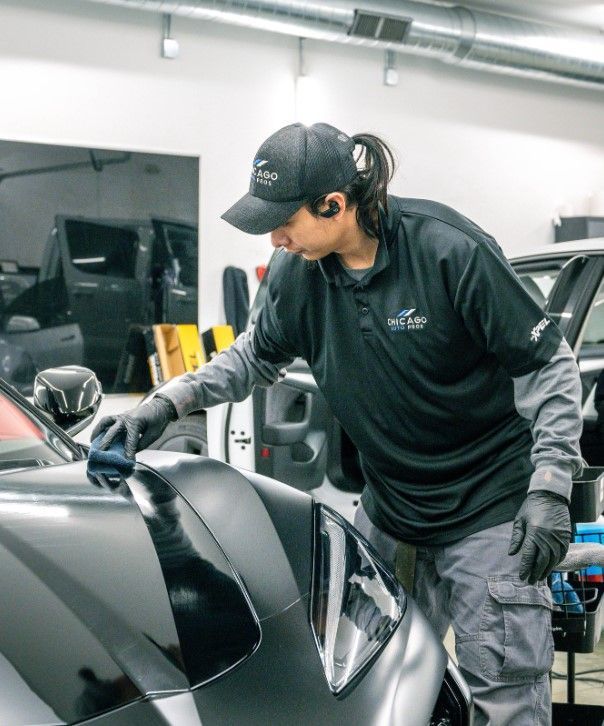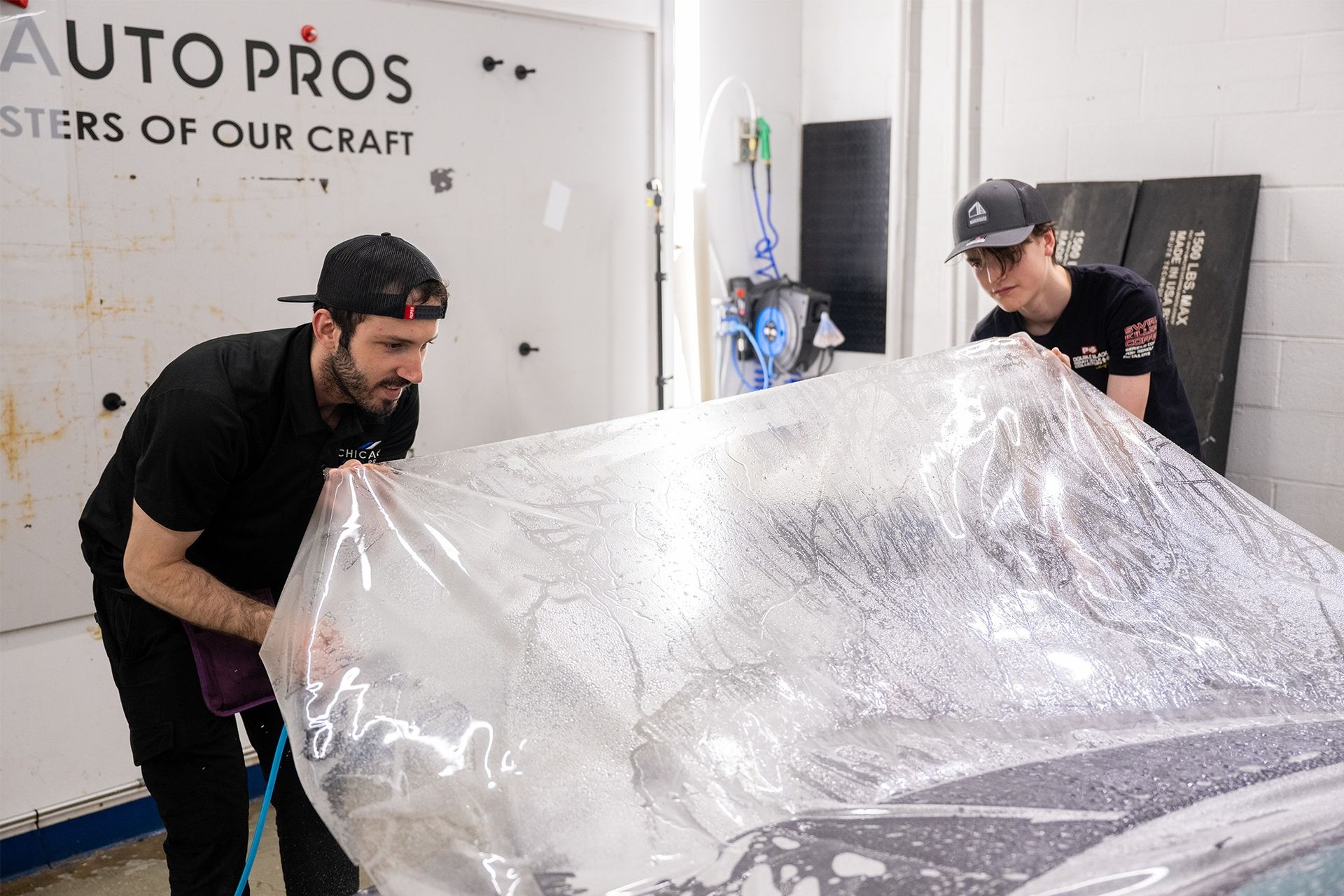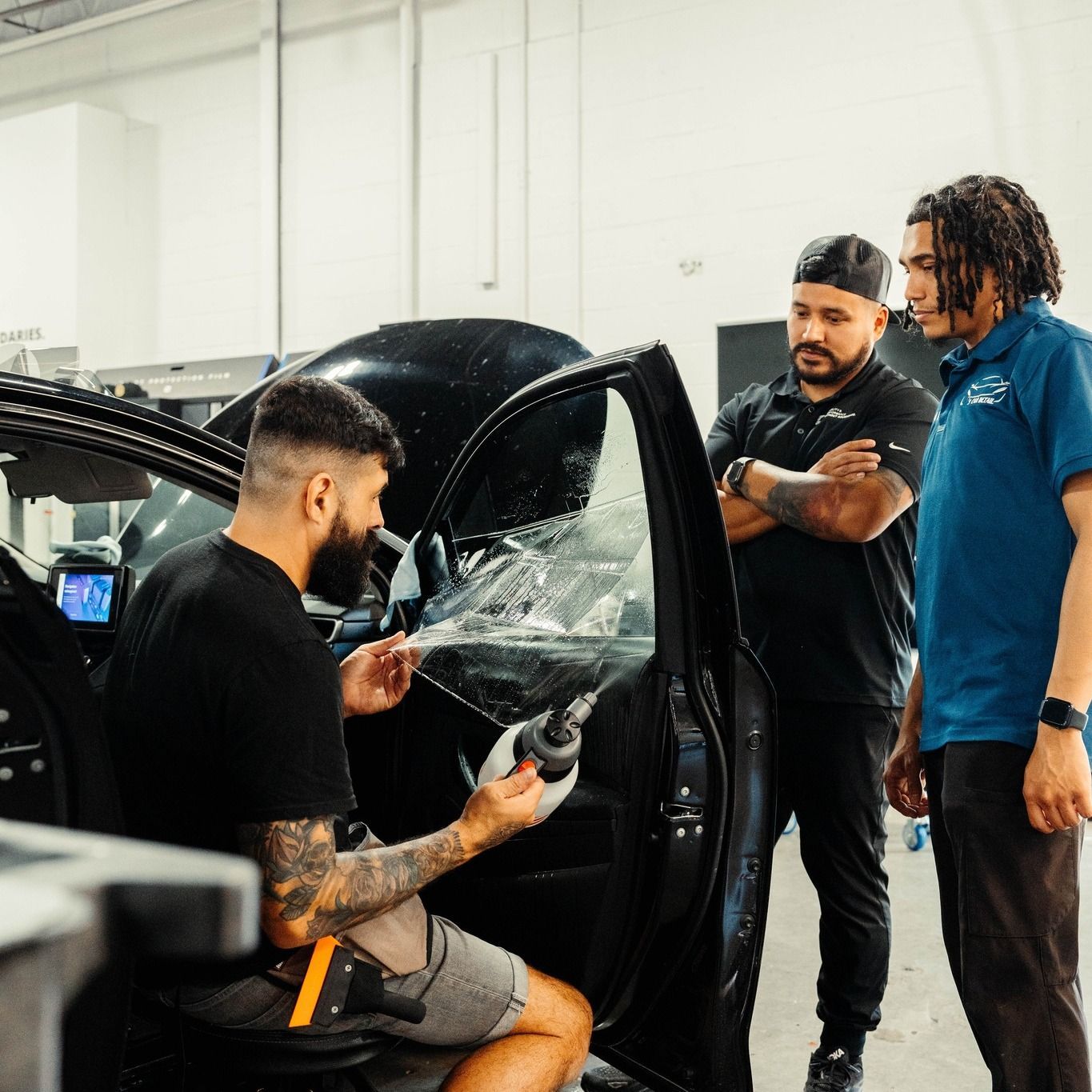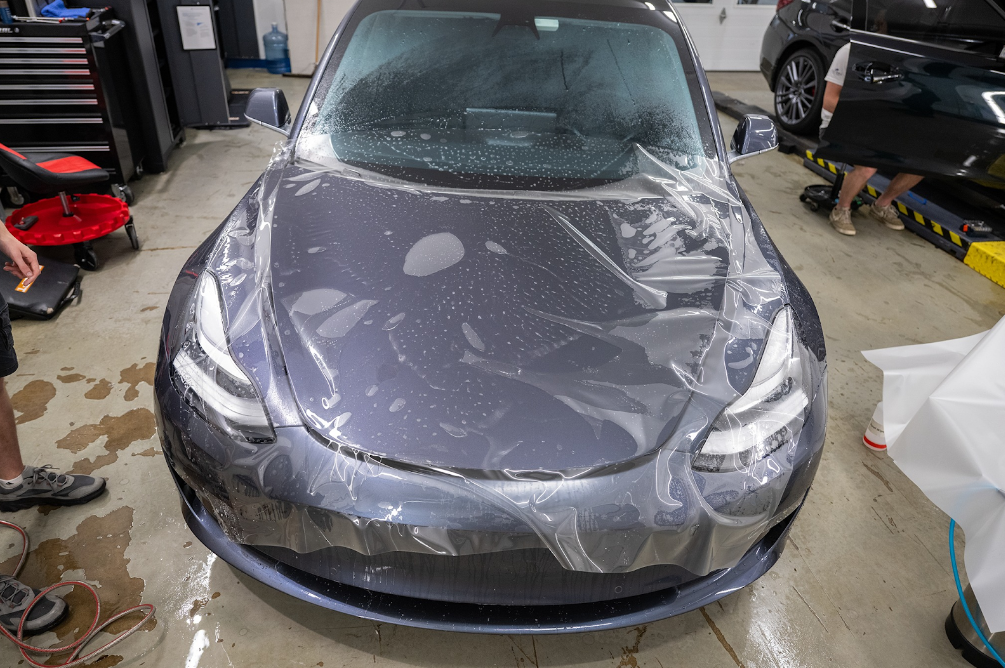The Ultimate Guide to Paint Protection Film Installation Process: Step-by-Step Instructions
Taking care of your car's paint can be nerve-wracking, especially when it comes to applying
Paint Protection Film (PPF). Many of us worry about making mistakes that could ruin our vehicle's finish. But don't let fear stop you.
The paint protection film installation process involves meticulous preparation of the vehicle's surface, precise cutting and alignment of the PPF film, a gentle application using a soft squeegee to avoid air trapping, and thorough inspection for imperfections before allowing the film to cure. This ensures seamless coverage and long-lasting protection for your vehicle's paint.
Our ultimate guide dives deep into every stage of the process, providing you with all the knowledge needed to tackle this project confidently. That being said, Chicago Auto Pros is prepared to offer you any kind of professional assistance that you may require. Let’s discover the step-by-step paint protection film installation process!
Basic Steps in PPF Installation
The installation of paint protection film is a meticulous process that requires careful attention to detail at each stage. This walk-through of the basic steps involved in PPF installation gives you a clear understanding of what it entails.
Step I: Planning and Preparation
Before embarking on the installation process, it's vital to plan which parts of your vehicle will benefit from PPF coverage. Different vehicle models may have specific areas that are more prone to wear and tear, and reviewing the manufacturer's guidelines for installation techniques unique to your vehicle model is crucial. This ensures that the PPF is applied correctly to provide maximum protection.
In this initial phase, it's essential to consider all the vulnerable areas that could benefit from PPF coverage. This may include the front bumper, hood, side mirrors, door edges, and other high-impact regions. Reviewing the manufacturer's guidelines provides valuable insights into any specialized techniques required for specific vehicle models, ensuring that the installation process is tailored to the unique needs of your vehicle.
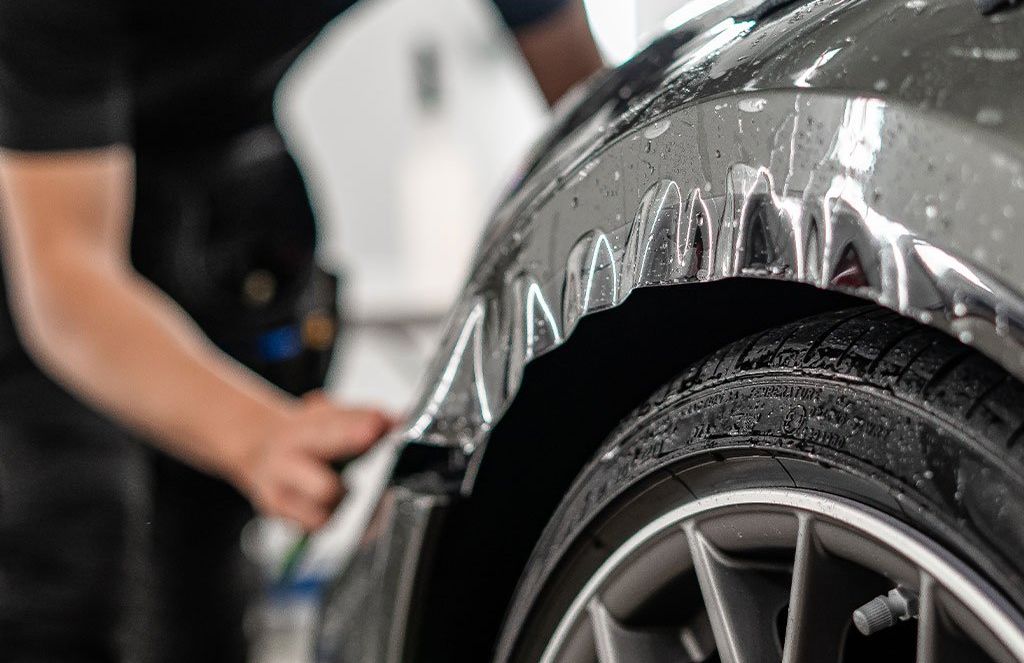
Step II: Surface Preparation
Once the areas for PPF application are identified, thorough cleaning of the vehicle's surface is essential before applying the film. Any dirt or debris present on the surface can result in bubbles and imperfections beneath the PPF. Therefore, a meticulous cleaning process is necessary to ensure a smooth and flawless application.
Surface preparation involves more than just basic washing. It often includes clay barring the paint surface and wiping it down with an alcohol solution to remove any remaining contaminants. This step is critical in creating an ideal foundation for the PPF, allowing it to adhere properly to the vehicle's surface without any obstructions.
Step III: Applying the Slip Solution
The next step involves spraying the area with a slip solution, typically a mixture of water and baby shampoo. This solution allows the PPF to be easily adjusted before it is set, facilitating precise positioning and minimizing the risk of errors during application.
Moreover, utilizing slip solution during application contributes to a seamless finish by preventing premature adhesion, giving installers enough time to align and position the film accurately without compromising its integrity.
Step IV: Applying the PPF
Carefully laying the PPF on the sprayed area is a delicate task that demands precision. Adjusting it to fit perfectly on the designated surface while ensuring there are no creases or bubbles is crucial for achieving optimal protection and a visually appealing result.
Step V: Squeegee Application
Using a soft squeegee, installers start from the center and work outward to remove any air bubbles and excess slip solution trapped beneath the film. This meticulous process ensures that the PPF adheres uniformly and securely to the vehicle's surface without any imperfections.
Step VI: Drying and Curing
Allowing the film to set and cure according to manufacturer recommendations is imperative for its long-term effectiveness. This can take several hours to a few days depending on environmental conditions such as temperature and humidity. Patience during this phase is essential to ensure that the PPF adheres completely and forms a robust protective barrier for your vehicle.
The basic steps in PPF installation lay a strong foundation for effective paint protection while also ensuring a professional and visually appealing outcome. For those who prefer expert installation services, Chicago Auto Pros offers comprehensive solutions tailored to your vehicle's specific needs.
Essential Materials and Tools
When it comes to applying paint protection film (PPF) to your vehicle, having the right materials and tools is essential for a seamless and effective installation process. Let's dive into the key materials and tools needed:
Paint Protection Film (PPF)
High-quality PPF material designed specifically for automotive use is fundamental. Premium PPF offers unparalleled clarity, self-healing properties, and excellent durability that provides long-lasting protection against various environmental hazards such as rock chips, scratches, and swirl marks.
Selecting high-quality PPF that is specially designed for automotive applications is critical in safeguarding your vehicle's paintwork. This premium film not only shields your car's exterior from physical damage but also maintains the aesthetic appeal of your vehicle by preserving its original color and gloss.
Slip Solution
A slip solution aids in positioning the PPF film accurately on the vehicle's surface. Typically composed of water and a small amount of baby shampoo or a dedicated PPF installation solution, this mixture enables the film to be adjusted before it sets, allowing for precise application without imperfections.
The slip solution serves as a crucial element during the installation process, ensuring that the film can be positioned correctly to prevent uneven application or creases that could compromise its protective function. It allows installers to manipulate the film's placement for optimal coverage while minimizing the potential for errors.
Squeegee
A soft rubber squeegee is utilized to smooth out air bubbles and excess solution during the application of PPF. This tool ensures proper adhesion of the film to the vehicle's surface while preventing air pockets or moisture buildup that can impact the film's appearance and protective capabilities.
The squeegee plays a vital role in securing a flawless finish during the PPF application process. It helps in evenly distributing the slip solution underneath the film while eliminating trapped air or liquid, contributing to a seamless and blemish-free result.
Cutting Tools
Precision cutting tools, such as a sharp cutting knife or pre-cut kits, are employed to trim excess film accurately after application. This step ensures that the PPF fits precisely to avoid overhanging edges or incomplete coverage, maintaining a professional and cohesive appearance once installed.
Using precision cutting tools is essential in achieving a clean and tailored fit for the PPF on each section of the vehicle. By carefully trimming excess material, installers can ensure that the film seamlessly integrates with the contours of the car's surface, delivering comprehensive protection without compromising its visual appeal.
Heat Gun
The use of a heat gun during PPF installation serves to warm the film gently, enhancing its flexibility and promoting better adhesion to the vehicle's contours. This heat application assists in conforming the PPF to complex curves and edges for secure and uniform coverage.
By employing a heat gun, installers are able to mold and manipulate the PPF to accommodate intricate areas on the vehicle, ensuring full encasement without compromising its structural integrity. The controlled application of heat contributes to a smooth and tailored finish that complements the car's design while fortifying its defense against environmental elements.
Microfiber Towels
Soft microfiber towels are utilized for cleaning and drying the vehicle surface before PPF installation. These non-abrasive towels help remove dust particles, smudges, or debris, creating a pristine canvas for seamlessly applying the protective film.
Maintaining a clean and debris-free surface before PPF installation is imperative in achieving an unblemished finish. The use of microfiber towels ensures that any contaminants are effectively eliminated, preserving the integrity of the film's adhesion while upholding the visual clarity of the vehicle's paintwork.
Equipped with these essential materials and tools, proper training combined with professional-grade equipment ensures a meticulous PPF installation process. For those seeking premium tools and films, consulting resources such as Chicago Auto Pros can provide expert guidance tailored to your specific needs.
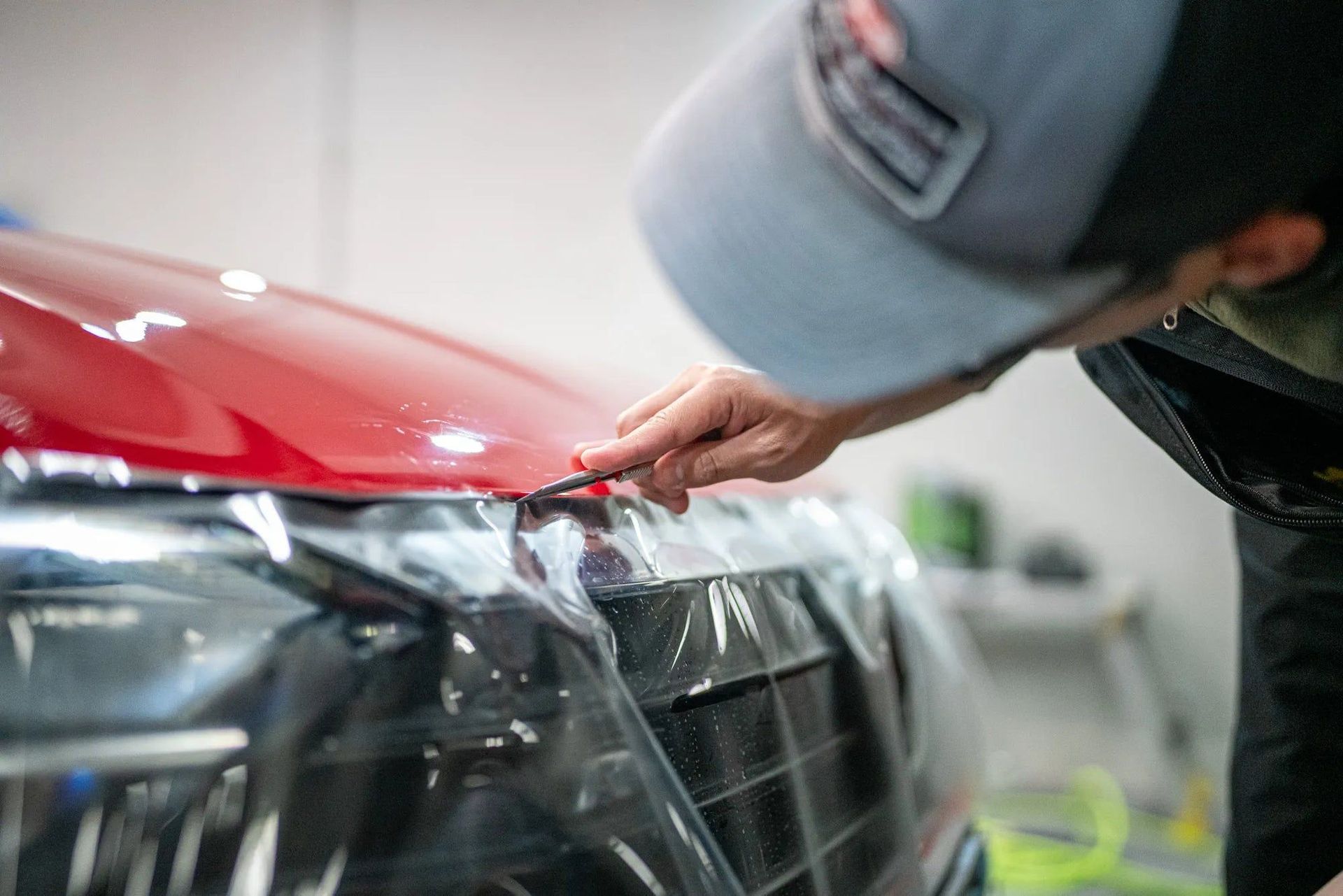
Preparing Your Vehicle's Surface
Your vehicle's surface needs to be clean, smooth, and free of imperfections for the best results. Here is a detailed breakdown of each step in this process.
Thorough Cleaning
Begin by giving your vehicle a thorough wash to remove all dirt, dust, and grime. It's essential to ensure every surface is clean to allow the paint protection film to adhere properly. This step is critical as any dirt or contaminants left on the surface can cause air bubbles or interfere with the film’s application.
For an even deeper clean, using a clay bar to remove contaminants from the paint surface can help achieve an impeccably clean finish. The clay bar picks up embedded dirt particles that regular washing might miss, leaving your vehicle's surface feeling smoother and more vibrant.
Alcohol Wipe Down
After cleaning, it's time to wipe down the entire surface with an isopropyl alcohol solution. Alcohol wipes away any remaining oils or residues, ensuring that the paint protection film has a clean and adhesive-ready base to adhere to. This step guarantees that the film will bond securely with the vehicle's surface, reducing the risk of peeling or lifting over time.
Be sure to use high-quality microfiber cloths or applicators during this process to avoid introducing any lint or scratches onto the newly cleaned vehicle surfaces.
Drying the Surface
After washing and wiping down your vehicle, it's crucial to allow the surface to dry completely before proceeding with film application. Allowing moisture to remain on the surface can cause adhesion issues during installation and compromise the overall quality of the film. Therefore, be patient and ensure that there is no residual moisture left on your vehicle before moving forward.
Now you have completed vital steps in preparing your vehicle's surface for a flawless paint protection film installation process. Remember: proper surface preparation significantly contributes to an impeccable installation outcome. If you're unsure at any point during this process, always seek advice from the professionals at Chicago Auto Pros, who are experts in paint protection film installations.
Applying the Protection Film
Once you've thoroughly prepped your vehicle's surface, positioning the paint protection film (PPF) correctly is vital. It’s like a precise dance, ensuring the film fits perfectly in place. Begin by applying a slip solution to both the film and the application area. This solution allows you to adjust and align the film as needed for a perfect fit. Taking time during this phase to ensure accuracy is crucial, especially around curves and complex areas.
Center Outward Squeegee Technique
As you begin squeegeeing from the center outwards, ensure that your strokes are gentle but firm. Take your time here to eliminate air bubbles that can result in an uneven appearance under the film. By working outward from the center, you effectively push out those stubborn air pockets.
Heat Application
The next step involves using a heat gun on low settings to soften the film around curves and edges. Think of it as molding clay—using just the right amount of heat helps it wrap snugly around corners. Be mindful not to overheat; precision is key here, ensuring that the film conforms seamlessly to every contour without compromising its integrity.
This process requires a delicate touch—too much heat can cause damage, while too little won't facilitate proper adherence.
For more intricate parts or complex curves, it's advisable to consult professionals who specialize in PPF installation. They execute these delicate procedures with utmost care and expertise. At Chicago Auto Pros, our seasoned technicians handle each step meticulously, ensuring flawless application tailored specifically to your vehicle's shape and specifications.
Trimming and Securing Edges
Once the paint protection film is smoothly fitted onto the vehicle's surface, it's time for precision trimming. A sharp precision knife is necessary for this delicate task. It's vital to carefully trim the excess film along the edges without cutting too close to avoid peeling. Precision trimming ensures that the edges are neat and secure.
Similarly, securing those trimmed edges is just as critical. After trimming, use a squeegee to firmly press down on the edges, ensuring that the film fits snugly in place. Applying gentle heat can also help soften the film, aiding in a proper fit along the contours of your vehicle's surfaces. This step guarantees that there are no areas where debris or moisture could sneak under the film later on.
Inspecting for Imperfections
Following these steps, meticulously inspect the film and surrounding areas for any signs of air bubbles or lifting edges. It's essential to address these immediately, as they can compromise the effectiveness of the protection film in shielding against potential damage.
Investing time and expertise into these finishing touches is indispensable for achieving a seamless, long-lasting finish that will protect your vehicle’s paint effectively.
For those who prefer a perfect finish without having to handle this complex process themselves, professional services at Chicago Auto Pros are worth considering. The skillful hands of our professionals ensure that every edge is secure and intact, providing unparalleled peace of mind when it comes to protecting your vehicle.
Post-Installation Care and Maintenance
Congratulations on successfully installing your paint protection film (PPF)! Now that your vehicle is equipped with this added layer of protection, it's important to ensure its longevity by providing proper post-installation care and maintenance. Let's go through some essential steps to keep your PPF in optimal condition.
Curing Time
First, it's crucial to allow the PPF to cure fully. The curing process typically takes 24 to 48 hours. During this time, it's vital to avoid washing or exposing the vehicle to any elements that may affect the adhesion of the film. This patience will ensure that the PPF adheres properly and serves its protective purpose effectively.
Regular Cleaning
Maintaining the cleanliness of the PPF keeps it looking pristine while safeguarding your vehicle's paintwork. To clean the film, use a mild soap and water solution, applying it gently without abrasives. Be cautious not to use harsh chemicals or abrasive cleaners, as they may compromise the integrity of the protective film. By adopting this gentle cleaning approach, you'll preserve the appearance of your PPF without causing damage or premature wear.
By following these post-installation care guidelines and incorporating protective measures, you can ensure that your PPF remains in top condition, providing long-lasting protection for your vehicle's exterior. Remember, attentive post-installation care is paramount in preserving the integrity and effectiveness of your PPF investment.
Professional PPF Installation Vs. DIY
Professional installation of paint protection film (PPF) is always the superior option. DIY kits may seem tempting, but their implementation requires precise installation with expert precision and the use of special tools—providing optimal protection and aesthetic value of your vehicle at once! With expert professional installation comes smooth application without bubbles, wrinkles, or misalignments, ensuring maximum protection and maintaining its aesthetic value for maximum aesthetic value and protection of the film itself.
Chicago Auto Pros' experienced technicians possess both the expertise and attention to detail required to perform flawless PPF installations every time. We utilize top-quality materials and cutting-edge techniques, providing your vehicle with comprehensive protection from scratches, chips, and environmental hazards. When choosing Chicago Auto Pros as your PPF provider, rest easy knowing your vehicle is being taken care of by professionals!
Are you ready to protect your investment with professional PPF installation services?
Reach out to Chicago Auto Pros now and schedule your appointment and experience what the difference professional care can make!
We Make Your Car Look Beautiful
Founded with an unquenchable desire for automotive perfection, Chicago Auto Pros is a leader in paint protection efforts and aesthetic vehicle detailing services in Chicago, Illinois. When you bring your automobile to our Chicago-based detailing shop, you are sure to experience unmatched integrity, customer service excellence, and above all, absolute automotive perfection from the inside out. Choose the right auto detailing team - choose Chicago Auto Pros!
Lombard Location
207a Eisenhower Ln S, Lombard, IL, United States
Glenview Location
2075 Johns Ct, Glenview, IL, 60025, United States
Additional Service Areas
Tesla & EV Detail Specialists
Services Offered
Quick Links
All Rights Reserved | Chicago Auto Pros

